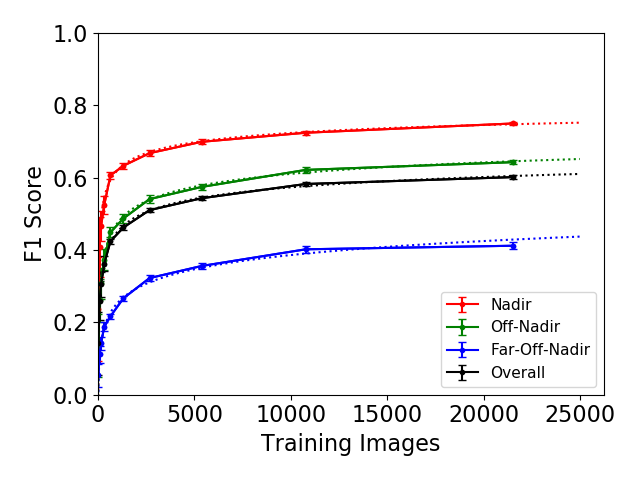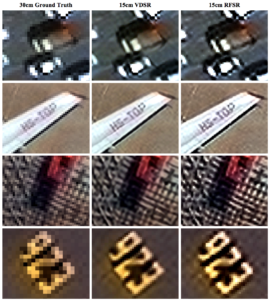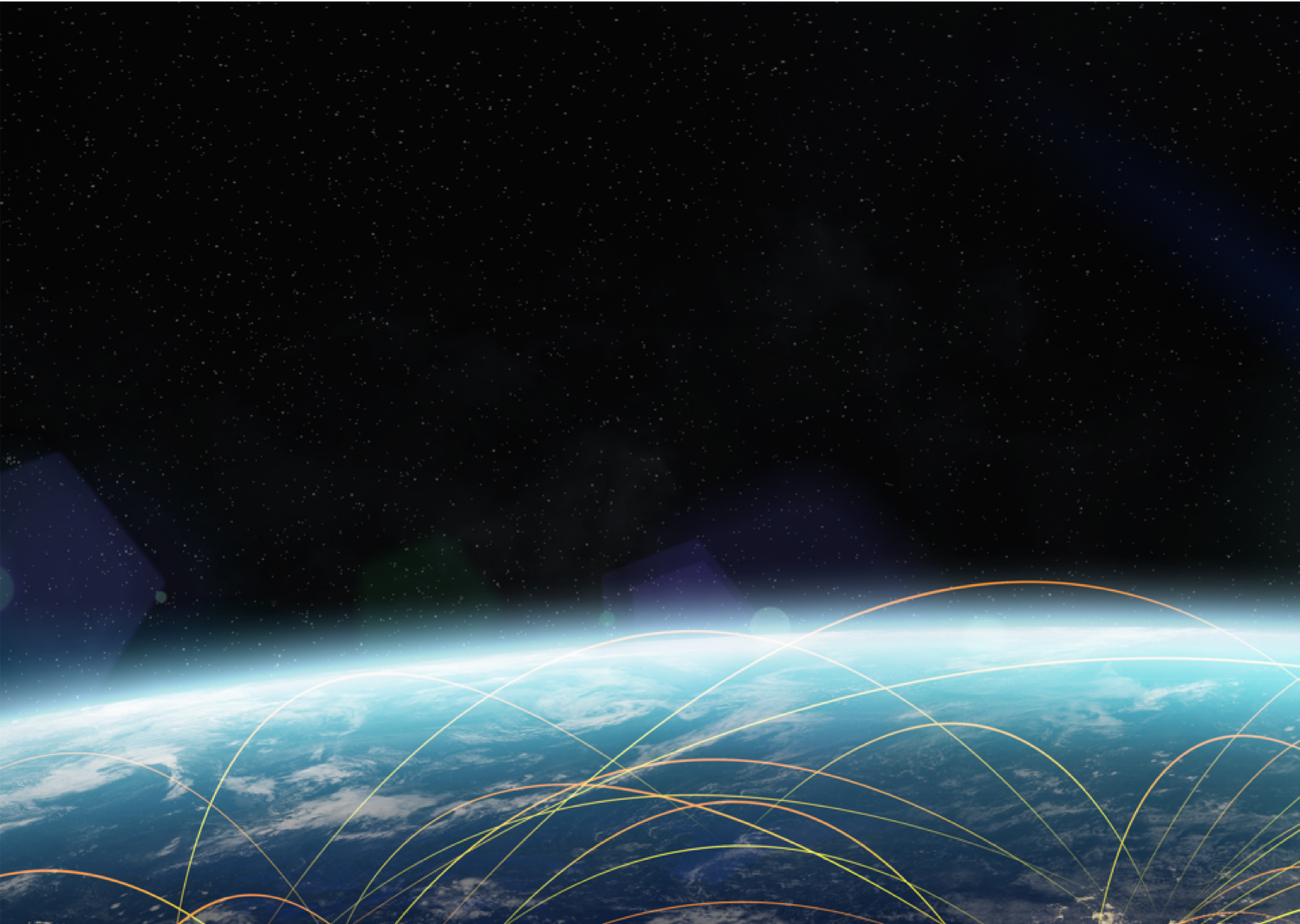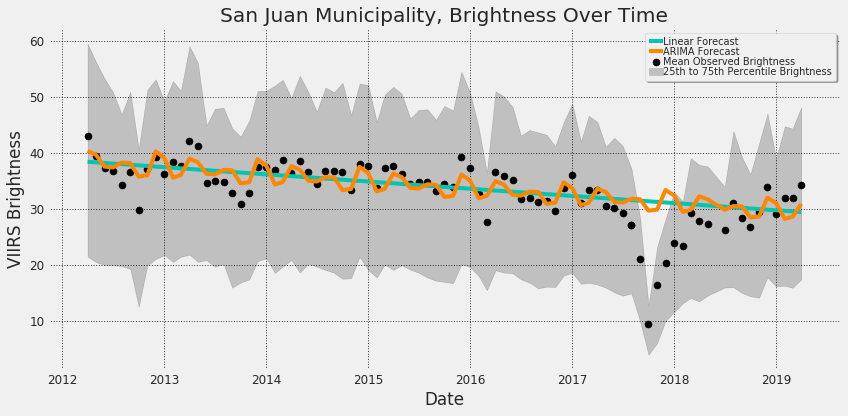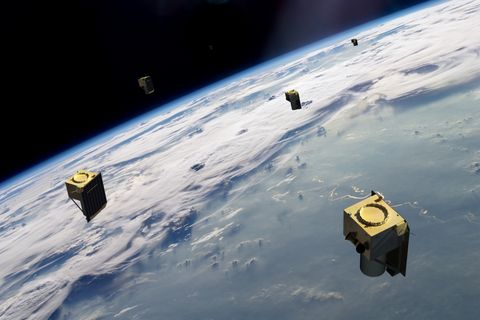Solaris
An open source Python library for analyzing overhead imagery with machine learning
Performing machine learning (ML) and analyzing geospatial data are both hard problems requiring a lot of domain expertise. These limitations have historically meant that one needs to be an expert in both to perform even the most basic analyses, making advances in AI for overhead imagery difficult to achieve. We asked ourselves: is there anything we can do to reduce this barrier to entry, making it easier to apply machine learning methods to overhead imagery data? Enter Solaris, a new Python library for ML analysis of geospatial data.
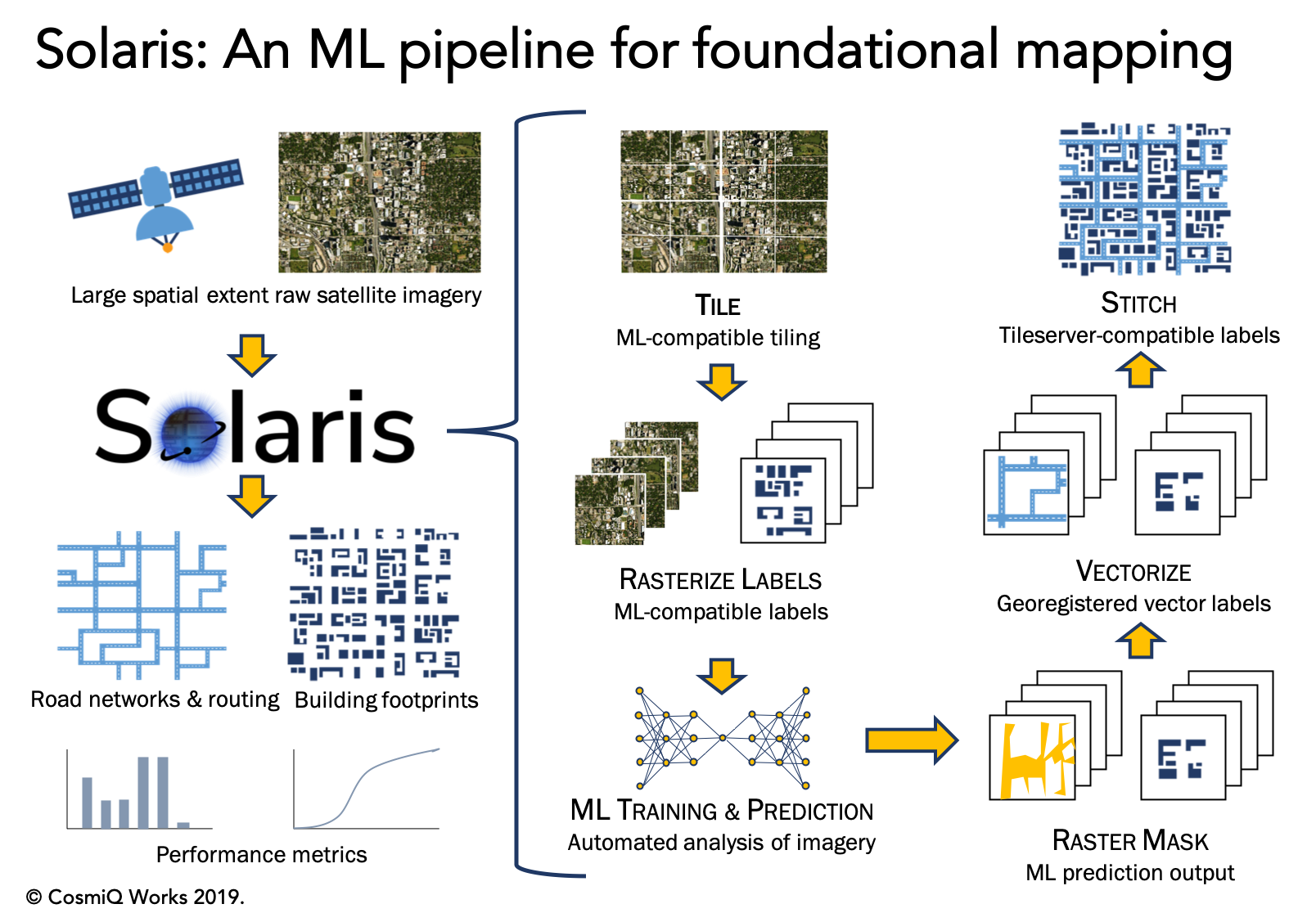
Solaris builds upon SpaceNet’s previous tool suite, SpaceNetUtilities, along with several other CosmiQ projects like BASISS to provide an end-to-end pipeline for geospatial AI. Solaris provides well-documented Python APIs and simple command line tools to complete every step of a geospatial ML pipeline with ease, including:
- Tile raw imagery and vector labels into pieces compatible with ML
- Convert vector labels to ML-compatible pixel masks
- Train state-of-the-art deep learning models with three lines of Python code
- Segment objects of interest with machine learning models (including the SpaceNet winners’ models, with pre-trained weights and configs provided!)
- Georegister predictions and convert them to standardized geospatial data formats
- Score model performance against hand-labeled ground truth using the SpaceNet datasets
Extensive documentation and tutorials are available for Solaris on the documentation page and on GitHub. The open source codebase is available under an Apache 2.0 license.

